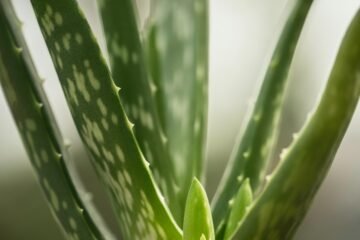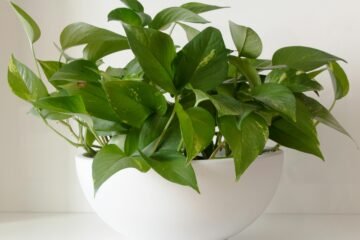Tropical plants monstera mean more humidity. It helps in summer to keep warm weather in the house.



Monstera deliciosa, also known as the split-leaf philodendron. It is a tropical rainforest houseplant. These plants have their own unique natural identity like they like to climb on the tree and they have special leaves that look like a heart. It can grow about 1 to 2 feet in a year, and takes around three years to reach full maturity. It’s super easy to grow and care. Monstera deliciosa is a fast growing plant and it grows fast in humid and warm weather. It loves indirect light for best results, keeps it in south face light, and rotates regularly and maintains the temperature between 65F to 85F. Place it out of reach from the kids and pets because Monsters deliciosa plant is toxic to humans and pets.
Common Names Split-leaf philodendron, Swiss cheese plant, windowleaf, ceriman
Botanical Name Monstera deliciosa
Family Araceae
Plant Type Vine
Mature Size 3 -15 ft. tall, 3-8 ft. wide
Sun Exposure Partial
Soil Type Well-drained
Soil pH Acidic, neutral
Bloom Time Summer
Flower Color White
Hardiness Zones 10-12 (USDA)
Native Area Central America
Toxicity Toxic to humans,
Monstera Deliciosa Care
Here are the main care requirements that helps me a lot for growing a Monstera deliciosa:
Light Requirements
Bright, Indirect Light:
Place your Monstera near a window where it can get plenty of indirect sunlight. South or east-facing windows are ideal and maintain 65F to 75F temperature.
Tool: Use sheer curtains to filter the light if it’s too intense.
Care: Think of your Monstera as a sunbather who prefers the shade of an umbrella. Too much direct sun can give it a sunburn! Set your indoor plants outside at least once a year in direct sunlight to encourage lush growth.
Watering
Moderate Watering:
Water your plant when the top inch of soil feels dry to the touch.Water slowly and deeply until water runs out of the drainage hole at the bottom. The soil should not be moist all the time.
Tool: A moisture meter can help you gauge the soil’s moisture level accurately. It helps me a lot.
Care: Your Monstera likes its soil to be like a wrung-out sponge—not too wet, not too dry.Limp and curling leaves are a common sign your monstera needs water
Humidity
High Humidity:
Aim for humidity levels above 60%.
Tool: A humidifier can be a lifesaver, especially in dry climates or during winter.
Care: Imagine your Monstera enjoying a tropical spa day. Keep the air moist to mimic its native jungle environment.
Temperature
Warm Temperatures:
Keep your Monstera in a room that stays between 65°F and 85°F (18°C – 29°C).
Tool: A digital thermometer can help you monitor room temperature.
Care: Your Monstera loves to stay cozy. Avoid chilly drafts and sudden temperature changes to keep it comfortable. I made the mistake and I gave them unnecessary stress.
Soil
Well-Draining Mix:
Use a potting mix designed for aroids, or mix your own with peat, perlite, and orchid bark.Monstera needs an evenly moist but well-draining potting soil when grown in a container.
Tool: A soil scoop makes mixing and repotting easier.
Care: Think of the soil as your Monstera’s bed. It should be snug but breathable to prevent soggy roots.
Fertilizing
Monthly Feeding:
Feed with a balanced, water-soluble fertilizer once a month during the growing season.
Tool: A measuring spoon ensures you get the dilution just right.
Care: Feeding time is like giving your Monstera a nutritious smoothie. A little boost each month keeps it thriving!
Types of Monstera Plants
Native to rainforests of Central America, there are nearly 50 species in the Monstera genus, with several species, cultivars, and variegated varieties. Here are some rarest mostera deliciosa.
Monstera Deliciosa ‘Variegata’
This variety features stunning white or cream variegation on its leaves, creating a marbled effect. It’s highly sought after for its unique and striking appearance.
Monstera Deliciosa ‘Albo-Variegata’
Known for its dramatic white variegation, often covering large sections of the leaf. Each leaf is unique, making it a prized addition to any collection.
Monstera Deliciosa ‘Thai Constellation’
This variety is characterized by its creamy white speckles and patches, resembling a constellation. It was developed in a lab in Thailand, making it relatively rare and unique.
Monstera Deliciosa ‘Aurea Variegata’
Features bright yellow variegation, giving the leaves a golden hue. The rare yellow markings make it a standout among Monstera varieties.
Monstera Deliciosa ‘Mint Variegata’
Displays mint green variegation, providing a subtle yet beautiful contrast against the dark green leaves. Its delicate color variation makes it a collector’s favorite.
Monstera Deliciosa ‘Sport’
This is a spontaneous mutation with unique variegation patterns, often less stable than other variegated varieties. Each plant’s variegation can differ significantly, adding to its rarity and intrigue.
Pruning
Pruning your Monstera Deliciosa is essential for maintaining its health and appearance. The best time to prune is during the growing season, typically in spring and early summer, when the plant is actively growing and can quickly recover from any cuts. Use clean, sharp pruning shears to remove any yellowing, damaged, or dead leaves.
Focus on cutting back leggy growth to encourage a fuller, bushier shape. You can also prune to control the plant’s size or to remove stems that have grown too long. If you want to propagate, take cuttings with at least one node and a few leaves. Always prune just above a node to promote new growth from that point.
Remember, pruning helps your Monstera stay vibrant and healthy, just like giving it a little trim and tidy-up.
Propagating Monstera Deliciosa



Monstera deliciosa can be propagated by stem cutting and air layering. The most popular method is air layering. Here I discuss both methods that help me to grow them easy and fast.
Propagating Monstera Deliciosa with stem cutting
- Choose a healthy stem with at least one node and a few leaves.Cut below the node using clean, sharp pruning shears or a knife.
- Remove any leaves near the bottom to expose the node.Optionally, dip the cut end in rooting hormone to encourage faster root growth.
- Place the cutting in a jar of water, ensuring the node is submerged.Change the water every few days to keep it fresh.
- Place the jar in bright, indirect light.Wait a few weeks for roots to grow, typically 2-4 weeks.
- Once roots are a few inches long, transfer the cutting to a pot with well-draining soil.Water thoroughly and continue regular care in a bright, indirect light location.
Propagating Monstera Deliciosa with Air Layering
Air layering is an effective propagation method for Monstera Deliciosa that involves encouraging roots to form on a stem while it’s still attached to the parent plant. This technique is particularly useful for larger, more mature plants, as it allows you to propagate without disturbing the plant’s overall structure.You’ll need floral or sphagnum moss, a plastic bag or wrap, and twist ties for this method.
- Choose a sturdy, healthy stem on your Monstera Deliciosa that has at least one node. This stem should be mature and free of disease or damage, as it will need to support new root growth.
- Carefully remove any leaves or debris around the selected node to expose the stem. This will provide a clear area for the air layering process and ensure better contact with the rooting medium.
- Using a clean, sharp knife or razor blade, make a small, shallow cut about one-third of the way through the stem, just below the node. This incision encourages root development by stimulating the plant’s healing process.
- If desired, apply a small amount of rooting hormone to the incision. This can speed up the rooting process by promoting quicker and stronger root growth. Not mandatory.
- Moisten a handful of sphagnum moss with water and wrap it around the incision, ensuring the moss is in direct contact with the cut. The moss should be damp but not dripping wet to maintain a suitable moisture level for root development.
- Cover the moss with plastic wrap, securing it in place with twist ties, string, or plant ties. Ensure the moss stays moist by checking it regularly and misting if necessary to maintain humidity around the incision.
- Place the plant in a location with bright, indirect light and wait for roots to develop. This process can take several weeks to a couple of months. You’ll know it’s ready when you see roots growing through the moss.
- Once a healthy root system has developed, cut below the rooted area with clean shears. Plant the new cutting in a pot with well-draining soil, water thoroughly, and place it in bright, indirect light. Continue regular care to help the new plant thrive.
Potting and Repotting Monstera Deliciosa
Check for signs like roots circling the bottom or emerging from drainage holes.Select a pot slightly larger than the current one to accommodate growth.Gently remove the plant from its current pot, inspecting roots for health.Place the Monstera in the new pot, filling around with fresh soil, and firming gently. Water thoroughly and return the plant to its usual spot, ensuring continued care.
Common Pests problem for monstera deliciosa
Monstera Deliciosa, like many houseplants, can be susceptible to certain pests. Here are some common pests to watch out for:
Spider Mites: These tiny pests can create fine webs on the undersides of leaves and cause yellowing and stippling. They thrive in dry conditions.
Mealybugs: Mealybugs are small, white, cottony insects that cluster on stems and leaf nodes, sucking sap from the plant. They can weaken the plant and cause stunted growth.
Scale Insects: Scale insects are small, round, or oval-shaped pests that attach themselves to stems and leaves, sucking sap from the plant. They can cause yellowing, wilting, and leaf drop.
Thrips: Thrips are slender insects that feed on plant sap, causing leaves to become discolored, curled, or distorted. They can also transmit diseases.
Fungus Gnats: These small, black flies are attracted to moist soil and lay their eggs in the soil. The larvae feed on organic matter and plant roots, causing damage to the root system.
To manage these pests:
Regularly inspect your Monstera Deliciosa for signs of pests, including on the undersides of leaves and along stems.
Remove any affected leaves or parts of the plant and dispose of them properly.
Use insecticidal soap, neem oil, or horticultural oil to treat infestations, following the manufacturer’s instructions carefully.
Keep the plant in optimal growing conditions, including providing adequate air circulation and avoiding overwatering, which can attract pests.
Quarantine new plants before introducing them to your Monstera to prevent introducing pests to your collection.
Common Problems of Monstera Deliciosa



Several common problems can affect Monstera Deliciosa. Here’s a list of issues and how to address them:
Yellowing Leaves: This can be due to overwatering, underwatering, or poor drainage. Ensure the plant’s soil is well-draining and water only when the top inch of soil feels dry. Adjust watering frequency as needed.
Brown Leaf Tips: Usually a sign of low humidity or underwatering. Increase humidity by misting the leaves regularly or placing a humidity tray nearby. Water the plant thoroughly when the top inch of soil feels dry.
Root Rot: Root rot occurs when the plant’s roots are consistently sitting in waterlogged soil. If you suspect root rot, remove the plant from its pot, trim away any affected roots, and repot it in fresh, well-draining soil.
Slow Growth: Slow growth can be due to factors such as insufficient light, inadequate nutrients, or rootbound conditions. Provide appropriate light, fertilize during the growing season, and repot if the plant has outgrown its container.
Pests: Common pests include spider mites, mealybugs, scale insects, and fungus gnats. Treat infestations with insecticidal soap, neem oil, or horticultural oil, following the manufacturer’s instructions carefully.
Wilting: Wilting can be a sign of underwatering, overwatering, or root rot. Check the soil moisture level and adjust watering accordingly. If root rot is suspected, address it promptly.
Leggy Growth: Monstera Deliciosa may become leggy if it doesn’t receive enough light. Move the plant to a brighter location with indirect sunlight or supplement with grow lights.



